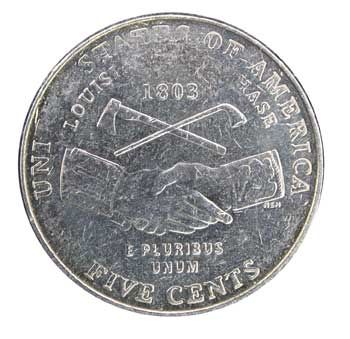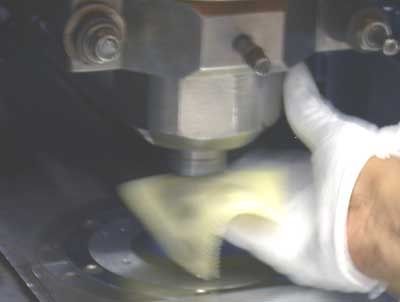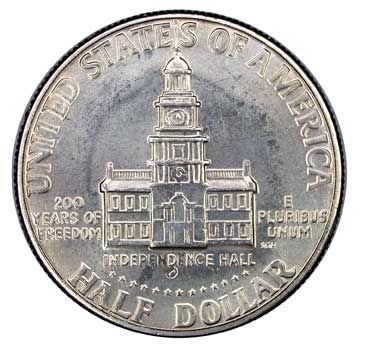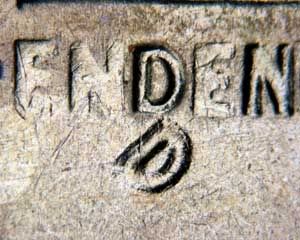Dropped Letters (The Un-filled Die)
 LeeG
Posts: 12,162 ✭
LeeG
Posts: 12,162 ✭
Thought this was an interesting article written by David J. Camire, President, Numismatic Conservation Services. Figured I'd share it here for others who might be interested in this subject. Photo's are Mr. Camires also.
It is a normal occurrence in the process of minting coins that, over time, some part of the dies may become either partially or fully clogged with debris. The most common form of this debris is a combination of metallic fillings and grease or oil which I will call "metallic dirt." (PHOTO #1) Metallic dirt will become imbedded in the recesses of the dies resulting in a coin struck with incomplete detail, missing portions of the design elements. (PHOTO #2) Because of the speed at which the presses operate (at 750 coins per minute), many coins can be struck with this obstruction before this situation is corrected. At some point, an inspector will notice the filled die flaw, stop the presses, and remove the build up. (PHOTO #3)
In some cases, metallic dirt will become dislodged on its own. In rare instances, under just the right conditions, a portion of this metallic dirt will become dislodged and drop onto an incoming planchet. When the planchet is subsequently struck by the dies, the dislodged piece will be struck into the coin. This piece will either stay imbedded in the surface of the coin or fall out. Either way it will leave a "mark" on the coin. This mark will be an incuse replication of part of the design from which it fell.
One of the most spectacular dropped letters that I have seen is the 1976-D Half Dollar photographed here. (PHOTO #3) Only one letter, the "D" in INDEPENDENCE, became unclogged. The other letters, "EN E" surrounding the "D," show little detail because the die is still partially clogged or filled with metallic dirt. (PHOTO #4) Note that on this example, the metallic dirt has fallen out leaving an incuse and inverted image of the letter ("D"). The dropped letter "D" may seem a little larger than the original "D" above it because the metallic dirt was flattened during striking. (PHOTO #5)
Photo #1: Metallic dirt shown embedded into a coin's surface.

Photo #2: 2004 Handshake 5C, struck from a filled die.

Photo #3: A mint employee cleans a die in a coinage press.

Photo #4: 1976-D Bicentennial 50C with dropped letter below INDEPENDENCE.

Photo #5: A close-up image of the 1976-D 50C shown in PHOTO #4.

It is a normal occurrence in the process of minting coins that, over time, some part of the dies may become either partially or fully clogged with debris. The most common form of this debris is a combination of metallic fillings and grease or oil which I will call "metallic dirt." (PHOTO #1) Metallic dirt will become imbedded in the recesses of the dies resulting in a coin struck with incomplete detail, missing portions of the design elements. (PHOTO #2) Because of the speed at which the presses operate (at 750 coins per minute), many coins can be struck with this obstruction before this situation is corrected. At some point, an inspector will notice the filled die flaw, stop the presses, and remove the build up. (PHOTO #3)
In some cases, metallic dirt will become dislodged on its own. In rare instances, under just the right conditions, a portion of this metallic dirt will become dislodged and drop onto an incoming planchet. When the planchet is subsequently struck by the dies, the dislodged piece will be struck into the coin. This piece will either stay imbedded in the surface of the coin or fall out. Either way it will leave a "mark" on the coin. This mark will be an incuse replication of part of the design from which it fell.
One of the most spectacular dropped letters that I have seen is the 1976-D Half Dollar photographed here. (PHOTO #3) Only one letter, the "D" in INDEPENDENCE, became unclogged. The other letters, "EN E" surrounding the "D," show little detail because the die is still partially clogged or filled with metallic dirt. (PHOTO #4) Note that on this example, the metallic dirt has fallen out leaving an incuse and inverted image of the letter ("D"). The dropped letter "D" may seem a little larger than the original "D" above it because the metallic dirt was flattened during striking. (PHOTO #5)
Photo #1: Metallic dirt shown embedded into a coin's surface.

Photo #2: 2004 Handshake 5C, struck from a filled die.

Photo #3: A mint employee cleans a die in a coinage press.

Photo #4: 1976-D Bicentennial 50C with dropped letter below INDEPENDENCE.

Photo #5: A close-up image of the 1976-D 50C shown in PHOTO #4.

0
Comments
New collectors, please educate yourself before spending money on coins; there are people who believe that using numismatic knowledge to rip the naïve is what this hobby is all about.
Apropos of the coin posse/aka caca: "The longer he spoke of his honor, the tighter I held to my purse."
If I only had a dollar for every VAM I have...err...nevermind...I do!!
My "Fun With 21D" Die State Collection - QX5 Pics Attached
-----
Proud Owner of
2 –DAMMIT BOY!!! ® Awards